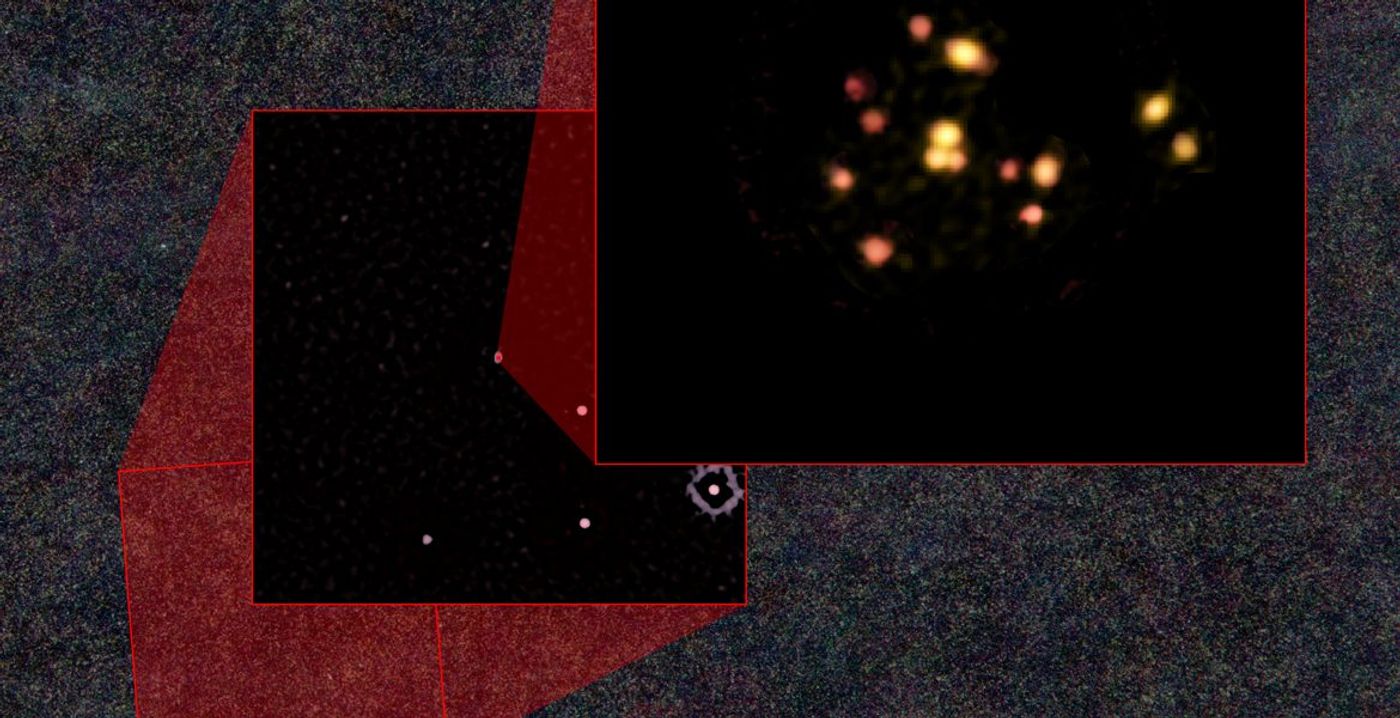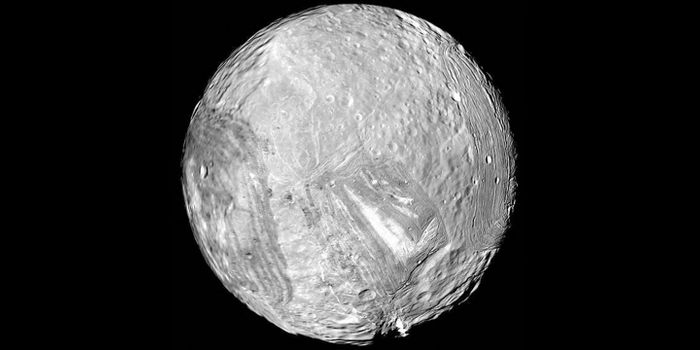Astronomers Spy On An Ancient Galaxy Megamerger
All thanks to observations made by both the Atacama Large Millimeter/submillimeter Array (ALMA) and South Pole Telescope (SPT), an international team of astronomers say that they’ve observed a galaxy megamerger involving 14 bright galaxies near at the edge of the observable universe.
Image Credit: ALMA (ESO/NAOJ/NRAO), T. Miller & S. Chapman et al.; Herschel; South Pole Telescope; (NRAO/AUI/NSF) B. Saxton
The astronomers discuss their findings in a paper published this week in the journal Nature. The 14 galaxies appear to be on a collision course, and computer models indicate that a super-sized galaxy cluster may result. The team has named the cluster SPT2349-56.
Worthy of note, SPT2349-56 is more than 12.4 billion light-years away, so we don't see it in real-time. There’s a 12.4 billion-year delay before the light emanating from it reaches Earth, so we effectively see what it looked like just 1.4 billion years after the Big Bang.
“Having caught a massive galaxy cluster in throes of formation is spectacular in and of itself, but the fact that this is happening so early in the history of the universe poses a formidable challenge to our present-day understanding of the way structures form in the universe,” explained Scott Chapman of Dalhousie University, a co-author of the study.
Related: Hubble spots two colliding galaxy clusters
As it would seem, the 14 galaxies observed in the study occupy a region of space just three times larger than the Milky Way itself. Furthermore, they’re so young that they appear to be forming new stars between 50 and 1,000 times faster than our own galaxy.
“How this assembly of galaxies got so big so fast is a bit of a mystery, it wasn't built up gradually over billions of years, as astronomers might expect,” added study co-author Tim Miller from Yale University.
“This discovery provides an incredible opportunity to study how galaxy clusters and their massive galaxies came together in these extreme environments.”
Related: Galaxy cluster from the early universe presents itself to astronomers
The observations may not seem like much at first glance, but it’s actually a treasure trove of valuable knowledge for experienced researchers. This discovery illustrates subtle features about what the early universe may have been like, and more importantly, it offers a unique opportunity to study galaxy cluster formation in detail.
It goes without saying that SPT2349-56 might teach us a thing or two…









